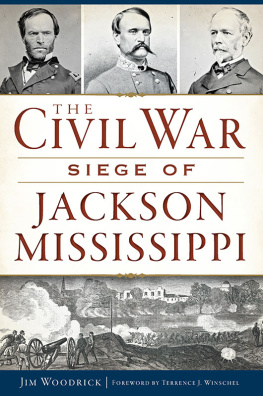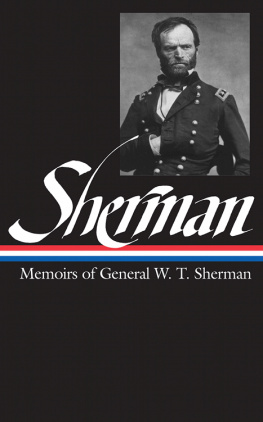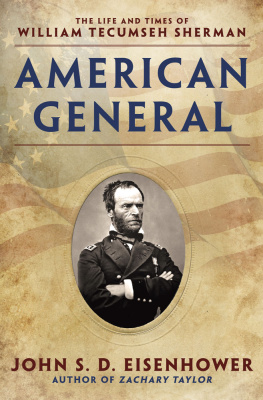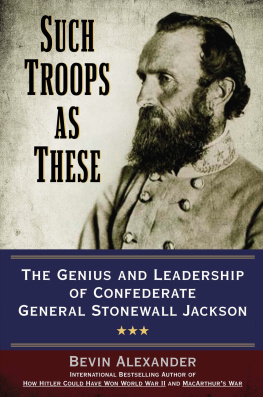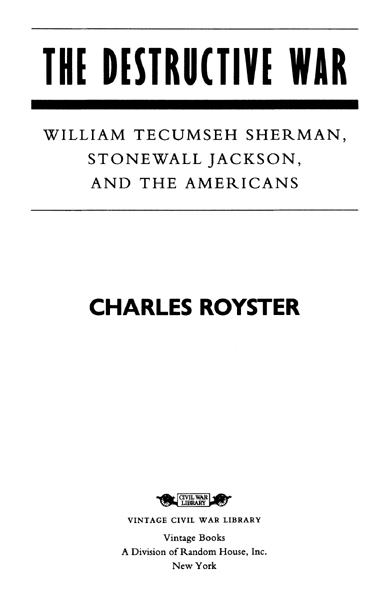CHARLES ROYSTER
THE DESTRUCTIVE WAR
Charles Royster was born in Nashville, Tennessee, in 1944. He was educated at the University of California, Berkeley. From 1977 until 1979 he was a Fellow of the Institute of Early American History and Culture. Since 1981 he has taught history at Louisiana State University, where he is T. Harry Williams Professor of American History. He has previously published Light-Horse Harry Lee and the Legacy of the American Revolution (1981) and A Revolutionary People at War: The Continental Army and American Character, 17751783 (1979), which received the Francis Parkman Prize and several other awards.
Also by Charles Royster
A Revolutionary People at War:
The Continental Army and American Character, 17751783
(1979)
Light-Horse Harry Lee and the Legacy of the American Revolution
(1981)
EDITOR
Memoirs of General W. T. Sherman
(1990)
FIRST VINTAGE CIVIL WAR LIBRARY EDITION, JANUARY 1993
Copyright 1991 by Charles Royster
All rights reserved under International and Pan-American Copyright Conventions. Published in the United States by Vintage Books, a division of Random House, Inc., New York, and simultaneously in Canada by Random House of Canada Limited, Toronto. Originally published in hardcover by Alfred A. Knopf, Inc., New York, in 1991.
Owing to limitations of space, all acknowledgments of permission to use material will be found following the index.
Library of Congress Cataloging-in-Publication Data
Royster, Charles.
The destructive war: William Tecumseh Sherman, Stonewall Jackson, and the Americans / Charles Royster. 1st Vintage Civil War library ed.
p. cm.
Originally published: New York: Knopf, 1991.
eISBN: 978-0-307-76059-3
1. United StatesHistoryCivil War, 18611865. 2. Sherman, William T. (William Tecumseh), 18201891Military leadership. 3. Jackson, Stonewall, 18241863Military leadership. I. Title.
[E468.9.R69 1993]
973.7dc20 9256370
v3.1
To
THAD TATE
FRANK SMITH
GALE PAGE
CONTENTS
CHAPTER 1
THE DESTRUCTION OF COLUMBIA
CHAPTER 2
THE AGGRESSIVE WAR: JACKSON
CHAPTER 3
THE AGGRESSIVE WAR: SHERMAN
CHAPTER 4
THE ANOMALOUS WAR
CHAPTER 5
THE DEATH OF STONEWALL
CHAPTER 6
THE VICARIOUS WAR
CHAPTER 7
THE BATTLE OF KENNESAW MOUNTAIN
CHAPTER 8
THE DESTRUCTIVE WAR
CHAPTER 9
THE GRAND REVIEW
LIST OF ILIUSTRATIONS
Following
Soldiers of the 7th Illinois Infantry Regiment on top of Lookout Mountain
William Waud, Burning of McPhersonville, South Carolina, February 1, 1865
William Waud, Columbia, South Carolina, the morning after the fire, February 18, 1865
Jacksons Mill, boyhood home of Thomas J. Jackson
Lt. Thomas J. Jackson in Mexico City
Laura Jackson Arnold
Where is Jackson? Here I am! (cartoon by a Federal officer)
Thomas J. (Stonewall) Jackson, April 1863
Mary Anna Jackson, with her granddaughter
Thomas Ewing
Ellen Ewing Sherman
Main Street in Lancaster, Ohio, ca. 1862
Senator John Sherman
W. T. Sherman in May 1865
Chromolithograph after E. B. D. Fabrino Julio, The Last Meeting of Lee and Jackson
Douglas Southall Freeman lecturing on the battle of Chancellorsville in Fredericksburg, Virginia, May 2, 1935
Shermans men destroying equipment in Atlanta, November 1864
Chromolithograph after G. P. A. Healy, The Peace Makers (Sherman, Grant, Lincoln, and Porter aboard the River Queen, March 28, 1865)
W. T. Sherman in the 1870s, as commanding general of the U.S. Army
Sherman after his retirement
The dedication of Augustus Saint-Gaudenss equestrian statue of Sherman, May 30, 1903
LIST OF MAPS
(Courtesy of the Department of Geography and Anthropology, Louisiana State University)
PREFACE
T HIS book deals primarily with one aspect of the Civil War: the scale of destruction to which the participants committed themselves. The lives and property swept away, as well as other forms of harm, far exceeded most early predictions. Americans surprised themselves with the extent of violence they could attain. I have explored some of the ways they reached this condition and the ways they accounted for it. I have given particular attention to the careers and reputations of two officers: William Tecumseh Sherman and Thomas Jonathan Jackson. For large numbers of their contemporaries these men epitomized the waging of successful war by drastic measures justified with claims to righteousness. Many people trying to explain the war did so in part by telling stories of and giving opinions about Jackson and Sherman.
A study of growing destructiveness in the Civil War properly touches on two of the questions most widely discussed by participants and historians: Why was the war fought? Why did the North win? Neither of these questions, however, is the main concern of this book. Nor have I undertaken to write a full survey of the military engagements in which Sherman and Jackson took part. My book is a long essay, touching on many aspects of war experiences and on postwar memories of them, in an effort to understand Americans ways of making their war destructive.
No one needs to be remindedand in the course of my research I have not been allowed to forgetthat the Civil War generation contained a complex multiplicity of opinions and aspirations. In using the customary imprecise words Northern and Southern as they apply to people waging war, I have of course meant to refer to the proponents of war that would preserve the union and the proponents of war that would sustain secession. People in both camps often said that they thought of themselves as Americans. Perhaps no public question impressed them more deeply than the efforts to define a nation, to make explicit in public life the bases for banding together as Americans. Obviously, some of the definitions were incompatible, not to mention internally inconsistent. To call oneself an American was to raise more questions than the word answered. The word is not less useful or important on this account, but more so. Millions of self-styled Americans set out to win assent to one or another definition by hurting or killing those who disagreed.
I have arranged the subjects discussed in this book with an intent to look as carefully as I could at the paths by which Americans came to seek more destructive war, the diverse results they anticipated from it, and the ways they understood what they had done. I have examined these topics with more than one approach to representing the versions of experience I found in the Civil War generations writings. The destructive war grew from small beginnings; yet it was also present or incipient at the start of the fighting. The people who made it surprised themselves, but the surprise consisted, in part, of getting what they had asked for.


